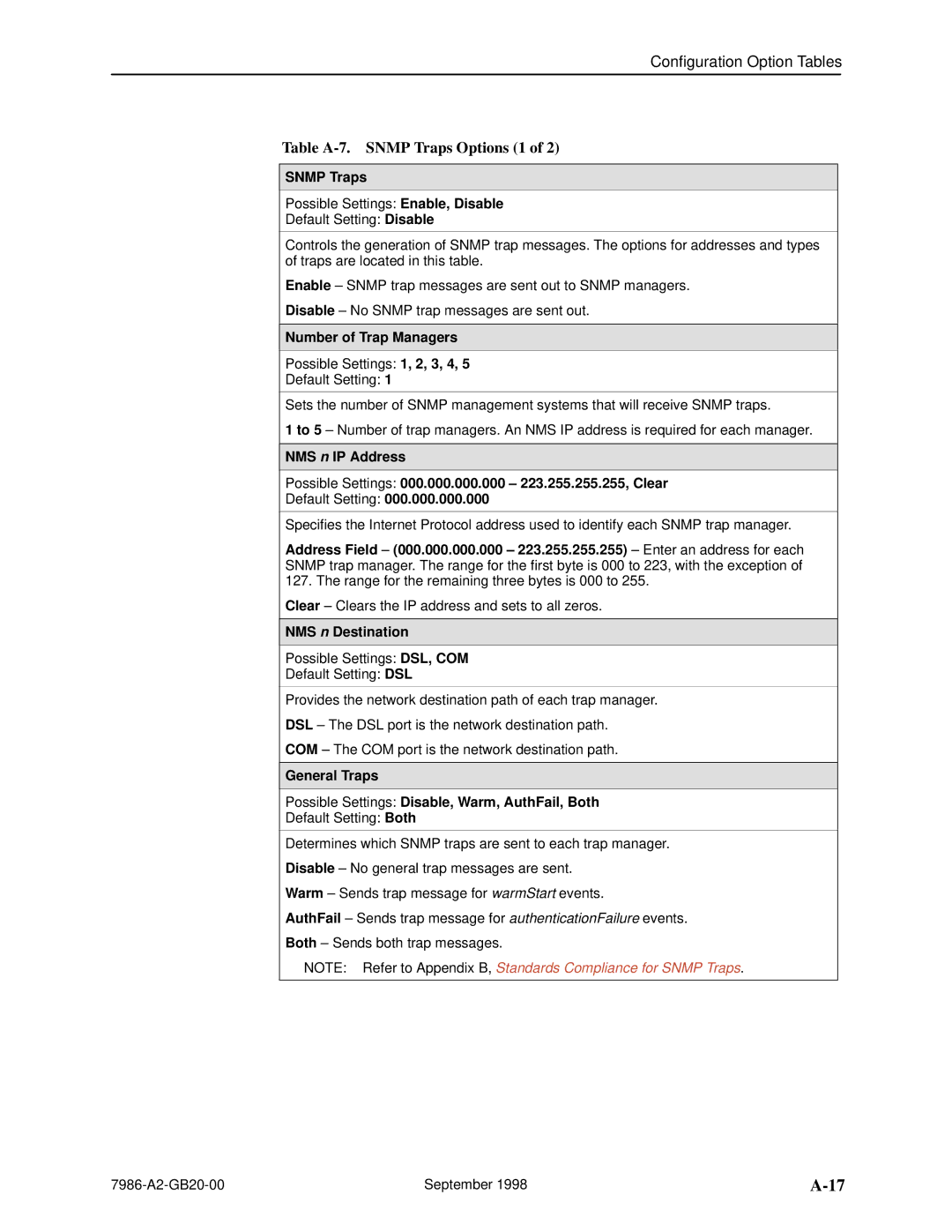
Configuration Option Tables
Table A-7. SNMP Traps Options (1 of 2)
SNMP Traps
Possible Settings: Enable, Disable
Default Setting: Disable
Controls the generation of SNMP trap messages. The options for addresses and types of traps are located in this table.
Enable ± SNMP trap messages are sent out to SNMP managers.
Disable ± No SNMP trap messages are sent out.
Number of Trap Managers
Possible Settings: 1, 2, 3, 4, 5
Default Setting: 1
Sets the number of SNMP management systems that will receive SNMP traps.
1 to 5 ± Number of trap managers. An NMS IP address is required for each manager.
NMS n IP Address
Possible Settings: 000.000.000.000 ± 223.255.255.255, Clear
Default Setting: 000.000.000.000
Specifies the Internet Protocol address used to identify each SNMP trap manager.
Address Field ± (000.000.000.000 ± 223.255.255.255) ± Enter an address for each SNMP trap manager. The range for the first byte is 000 to 223, with the exception of 127. The range for the remaining three bytes is 000 to 255.
Clear ± Clears the IP address and sets to all zeros.
NMS n Destination
Possible Settings: DSL, COM
Default Setting: DSL
Provides the network destination path of each trap manager.
DSL ± The DSL port is the network destination path.
COM ± The COM port is the network destination path.
General Traps
Possible Settings: Disable, Warm, AuthFail, Both
Default Setting: Both
Determines which SNMP traps are sent to each trap manager.
Disable ± No general trap messages are sent.
Warm ± Sends trap message for warmStart events.
AuthFail ± Sends trap message for authenticationFailure events.
Both ± Sends both trap messages.
NOTE: Refer to Appendix B, Standards Compliance for SNMP Traps.
September 1998 |
